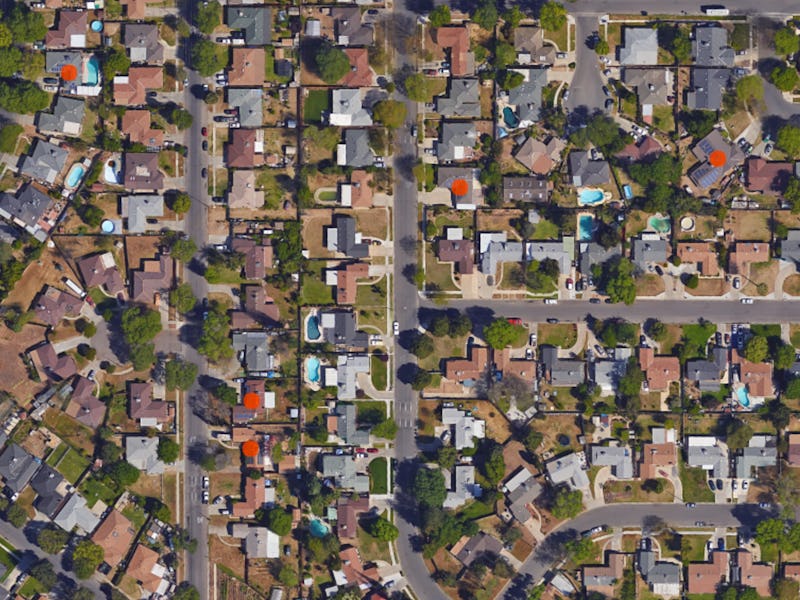Google Project Sunroof Wants to Create FOMO About Solar Panels
Solar energy is contagious.

On Monday, Google started applying what might be considered a little bit of peer-pressure to convince people to buy solar panels. It will now show you which of your neighbors already have solar panels.
The feature is part of Google’s “Project Sunroof,” a tool that can help you estimate how much sun your home gets, what solar panels cost, and how much money solar panels will help you save over time. But people don’t think about solar panels that logically. Instead, research has found that you’re more likely to buy solar panels if your neighbor buys them. So Google has added a way to see existing solar arrays in our neighborhood, marked in big red dots, to try and increase your chances of investing in solar panels.
“We want to make it easy for people to make informed decisions about whether to invest in solar,” Carl Elkin, Senior Software Engineer at Project Sunroof tells Inverse. “Now instead of driving street to street, it’s a little easier to see if houses around you and communities nearby have already gone solar.”
The impact of your neighbors’ solar purchases was discovered in research by Kenneth Gillingham, a professor of economics at Yale University. The first person to buy solar panels in a neighborhood is almost like patient zero of a solar panel contagion. After that first panel, people in the area start to get panels too, creating clusters of solar energy that scatter out like a wave. The effect is more powerful than factors like income, age, race, or political party.
“Over a six-month period, the presence of one solar rooftop project increased the average number of installations within a half-mile radius by nearly 50 percent,” Gillingham and his team writes in the national guidebook for their research “Solarize Your Community.”
And Google is taking advantage of this social pressure to show you where the solar panels are near you. To do this it uses machine learning algorithms to identify solar panels in images it has taken for Google Maps. “We started by taking in high-resolution imagery of rooftops and manually identifying solar installations,” Elkin says. “After many [training] iterations, our machine learning algorithms can now automatically find and identify installations in the imagery.”
This can identify both solar panels and solar hot water heaters, Elkin says. None of the buildings are identifiable by address, or listed in any way other than the big red dot on the maps view, but individuals can opt out if they want to. Check out your neighborhood on “Project Sunroof” if you dare, but fair warning, you might catch the solar panel bug yourself.